What do deer eat? It would almost be easier to answer the question “What don’t deer eat?” Deer, especially whitetails, can survive on a diverse menu that includes agricultural crops, wild native flora, and non-native plants that suburbanites plant in their gardens and flowerbeds. Also, deer eat a lot. Depending on the time of year, a whitetail needs to eat eight percent of its body weight in leafy greens and browse every day to stay healthy.
Hunters and wildlife biologists aren’t the only ones who take a keen interest in what deer eat. I have fond memories of my mom cussing out the neighborhood whitetails for ruining her hosta plants. Farmers across the Midwest can apply for depredation permits when whitetails devastate their crops. Anyone hoping to deter deer should be just as curious about what deer eat as someone who wants to attract them.
Seasonality, geographic location, nutritional needs, availability of certain food sources are some of the main factors that influence what a whitetail eats on a given day. But deer diets are most easily organized by what kind of habitat the food sources come from. In the wilderness, deer will search out a variety of leaves, twig ends, shoots, forbs, nuts, fruits, grasses, and even the occasional critter (like in this video of a deer eating a snake). Yards and home gardens also offer countless browsing opportunities for deer. Farmland offers acre after acre of crops ready for browsing. So here’s an overview on what deer eat seasonally and throughout their range. Note that this isn’t a comprehensive list of every single plant species that deer eat, but rather a guide to deer’s key food sources.
Seasonal Variations in What Deer Eat
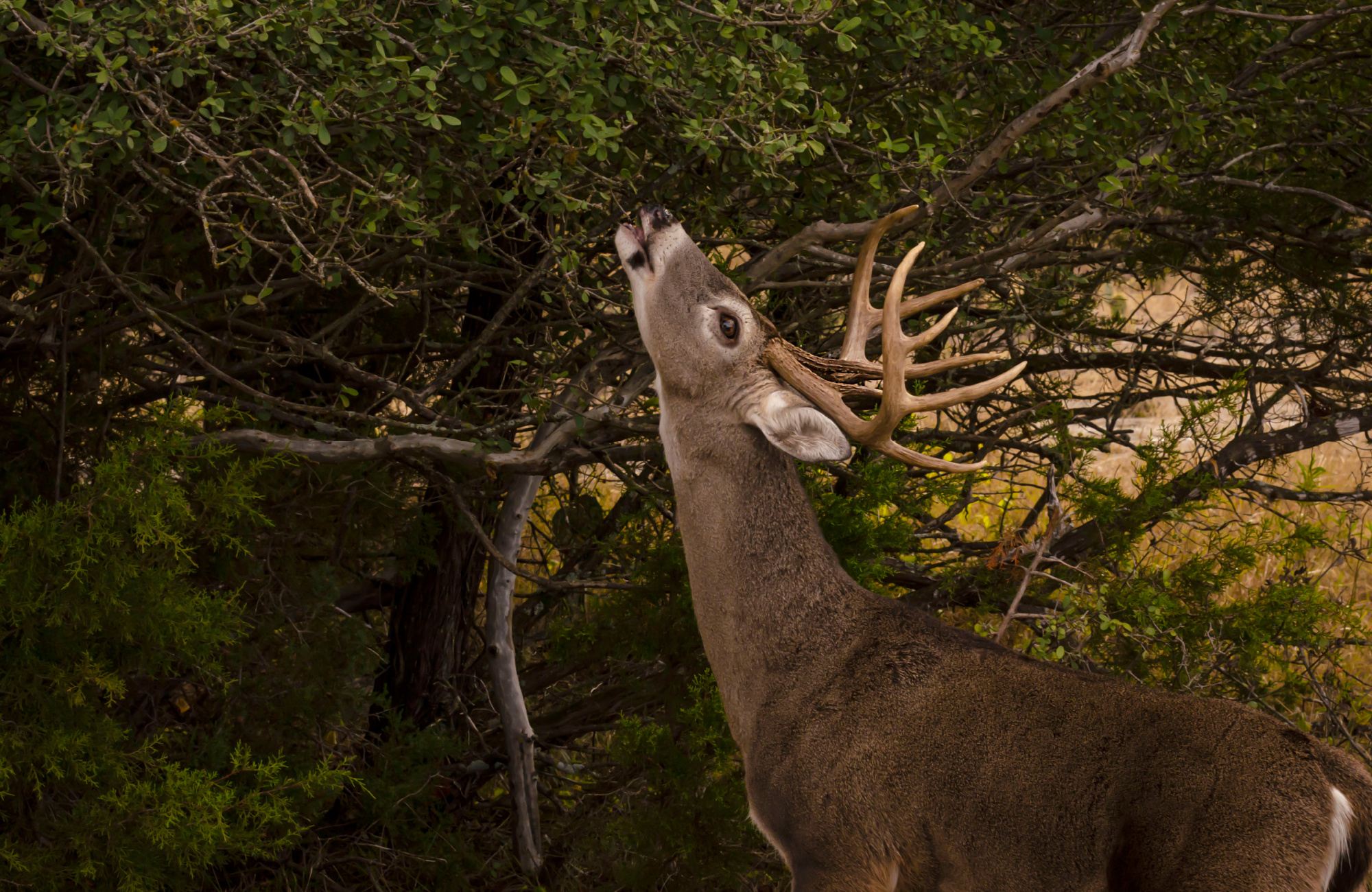
As temperatures, precipitation, and daylight hours change, so does the food sources available to deer. Deer must constantly shift their diets to meet their nutritional needs with whatever’s available on the landscape, yard, garden, or farm.
“Deer have been around for a long time. They’ve adapted their diet with these seasonal changes, without a doubt,” National Deer Association conservation director Matt Ross tells Outdoor Life. “That’s why they’re such good survivors and are so productive.”
Winter
Starting at the beginning of the calendar year, food sources look bleak for most whitetails—at least for those that live in places with cold winters. During this time, deer eat a lot of woody, fibrous material that requires their digestive system (with its four-chambered stomach) to work extra hard to break down tough material. In doing so, their organs produce a lot of necessary body heat. So even though woody food isn’t particularly rich in nutrients, it does keep them warm. In farm country deer will also dig out waste grain throughout the winter.
Spring
Once green-up starts in the spring, grasses pop up first. This is the one time of year when deer actually eat a significant amount of grass. They need all the nutrition they can find, and most forbs, browse, and mast are still in the early growing stages. But it’s not long before these other more desirable food sources sprout.
When that eventually happens, deer trade grasses for the broad-leafed plants and flowers that usually come out first, followed shortly thereafter by tree buds, shoots, and fresh leaves that make up most browse. Preparation for the next cold season overlaps with recovery from the last one, and deer start packing on the pounds.
Protein is also an important nutritional consideration for deer, which rely on it for optimal antler growth, lactation, and other natural processes. The sweet spot seems to be a diet that’s 14 to 20 percent protein, but that figure changes with the seasons. For example, bucks and does both need more protein in the spring when they’re either growing horns or offspring. Protein demands are to blame whenever the errant video of a deer eating a dead animal pops up on the Internet.
Summer
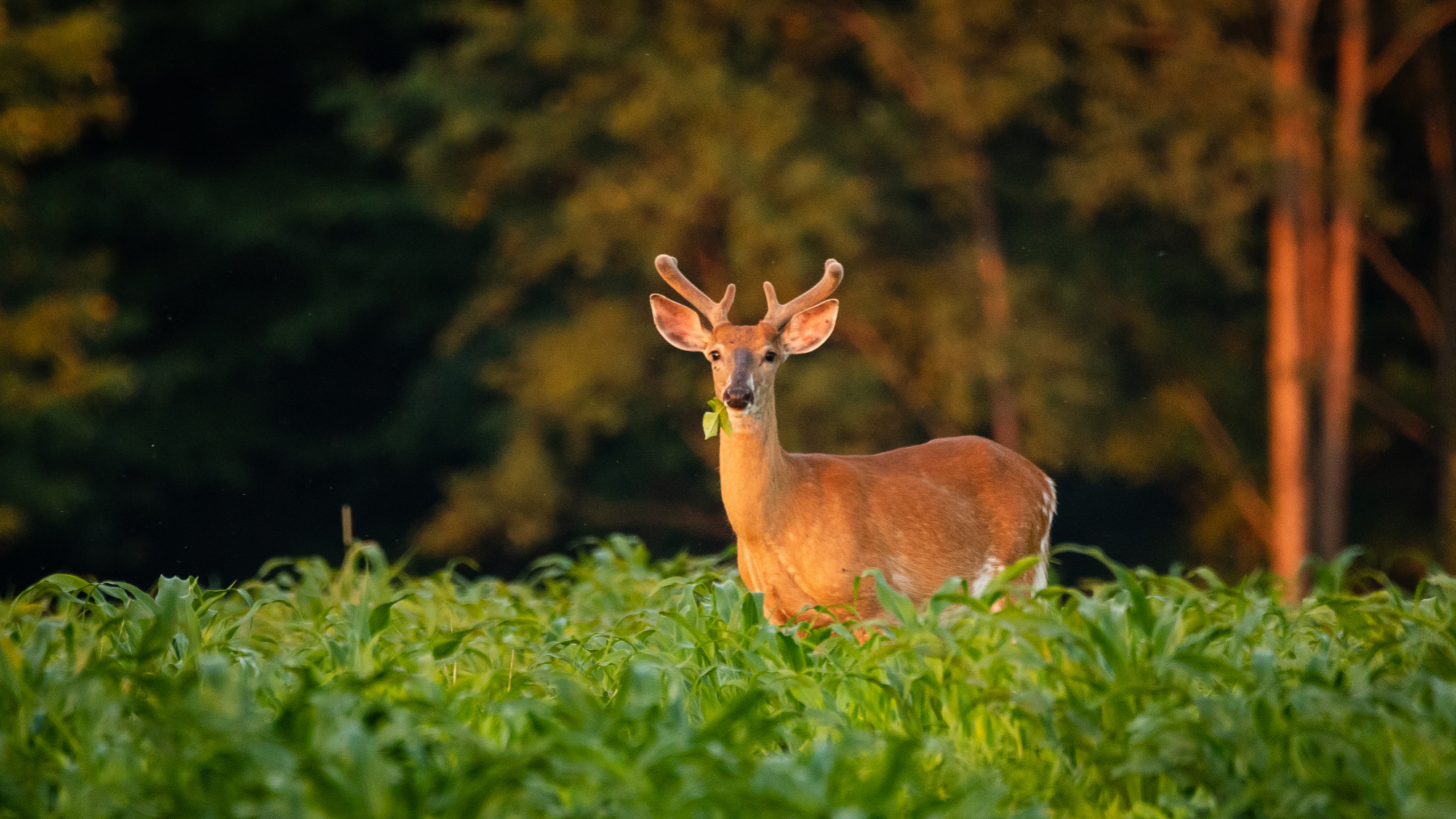
By the early to mid summer, forbs are starting to dry up and most reachable browse has been eaten. That’s why It’s common to see summer deer swarming alfalfa, clover, and beanfields in the evenings.
Fall
By early to mid fall, mast (like acorns and beechnuts) becomes available to deer. This time of year they’re growing fat stores to survive the rut and looming winter, where deer shed pound after pound.
“Deer can gain up to 30 percent of their body mass and weight, and they can lose it,” Ross says. “Their entire life cycle—productivity, needing enough milk and colostrum [for fawns], is timed with spring green-up. They grow antlers, shed them, and re-grow them when there’s food available. The antlers are hardened and not taking any nutrients away when there’s no food available. It is all driven by food availability. And the fact that they can select certain plant species, plant parts, and capitalize on the most nutrient-rich, palatable food sources, is part of that.”
Regardless of the season, deer will browse on a variety of food sources, Ross says.
“They’re always going to eat a wide variety of plants,” he says. “They’re not going to put all their eggs in one basket, or all their acorns in one basket, if you will.”
A Whitetail Deer’s 5 Favorite Foods
In order to narrow down broad categories like “mast” and “forbs,” we ranked what we consider to be a whitetail’s five favorite food sources. This isn’t exactly a scientific list, but rather a subjective list based on OL’s collective decades of deer hunting experience.
- White oak acorns
- Corn
- Soybeans
- Clover
- Alfalfa
Natural Forage
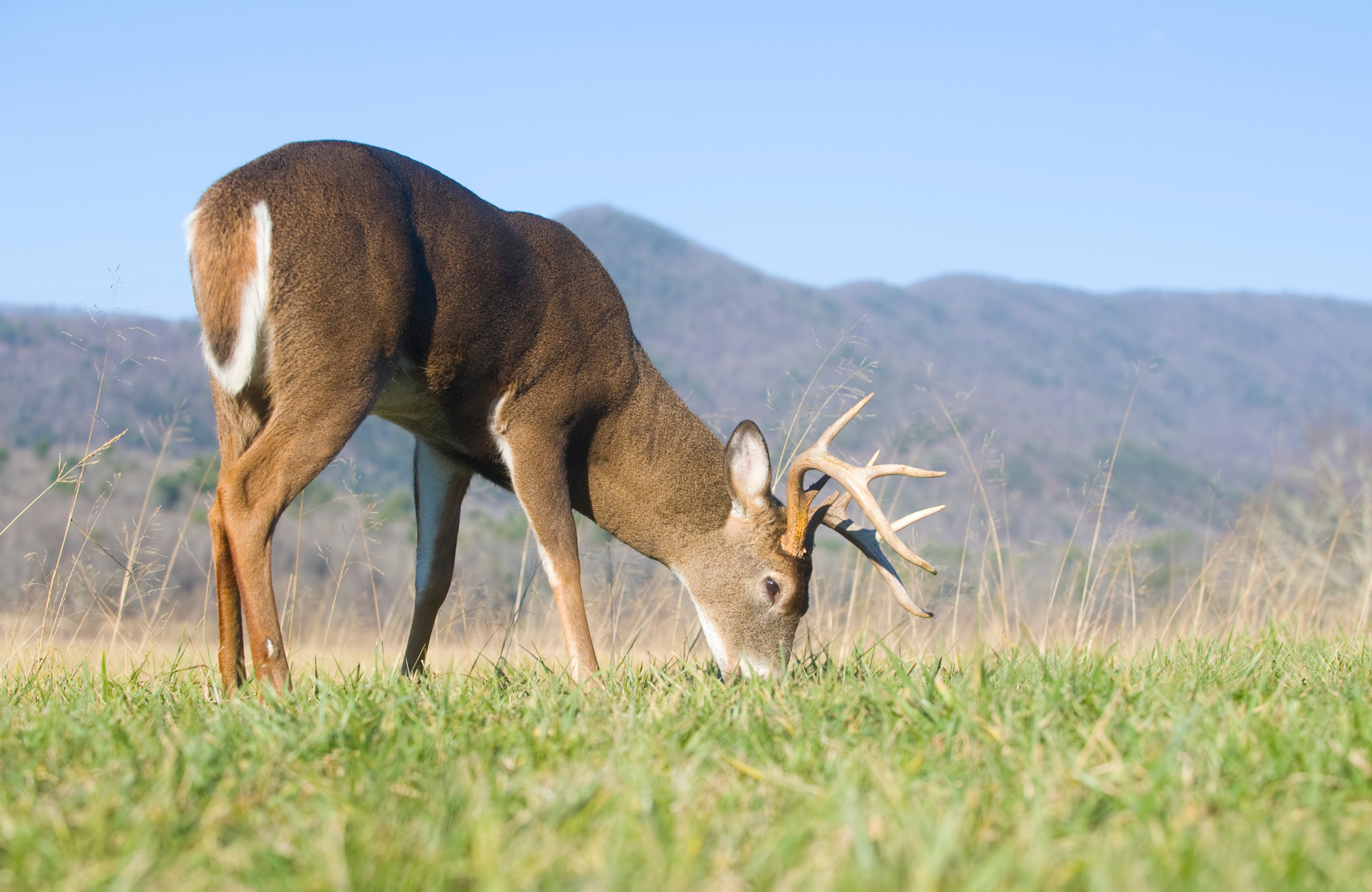
Deer are browsers, not grazers. This means they eat leaves, soft tips, shoots, fruits, and branches from woody plants like shrubs and trees. While the list of natural forage sources deer prefer changes depending on where they live, there are primary tree, shrub, and vine species that whitetails seek out across most of their range. Here are some of those key food sources:
Trees
- Black gum
- Dogwood
- Elm
- Maple
- Oak
- Sumac
- White cedar
- White pine
- Yellow birch
Shrubs and Vines
- Blackberry
- Blueberry
- Elderberry
- Greenbriar
- Honeysuckle
- Huckleberry
- Poison ivy
- Viburnum
Hard Mast
The term “mast” means the nuts, fruits, and seeds that trees and shrubs grow, and wildlife eat. We’ll break mast into two categories: hard mast, meaning nuts and seeds; and soft most, meaning fruits and berries.
- Acorns
- Beechnuts
- Chestnuts
- Hickory nuts
- Honey Locust seeds
- Pecans
Soft Mast
- Apples
- Berries
- Persimmons
- Sumac
Herbaceous plants are divided into two classifications: forbs and grasses. Deer eat a lot of forbs, which differ from grasses with their nutrient-dense broad leaves and blossoms.
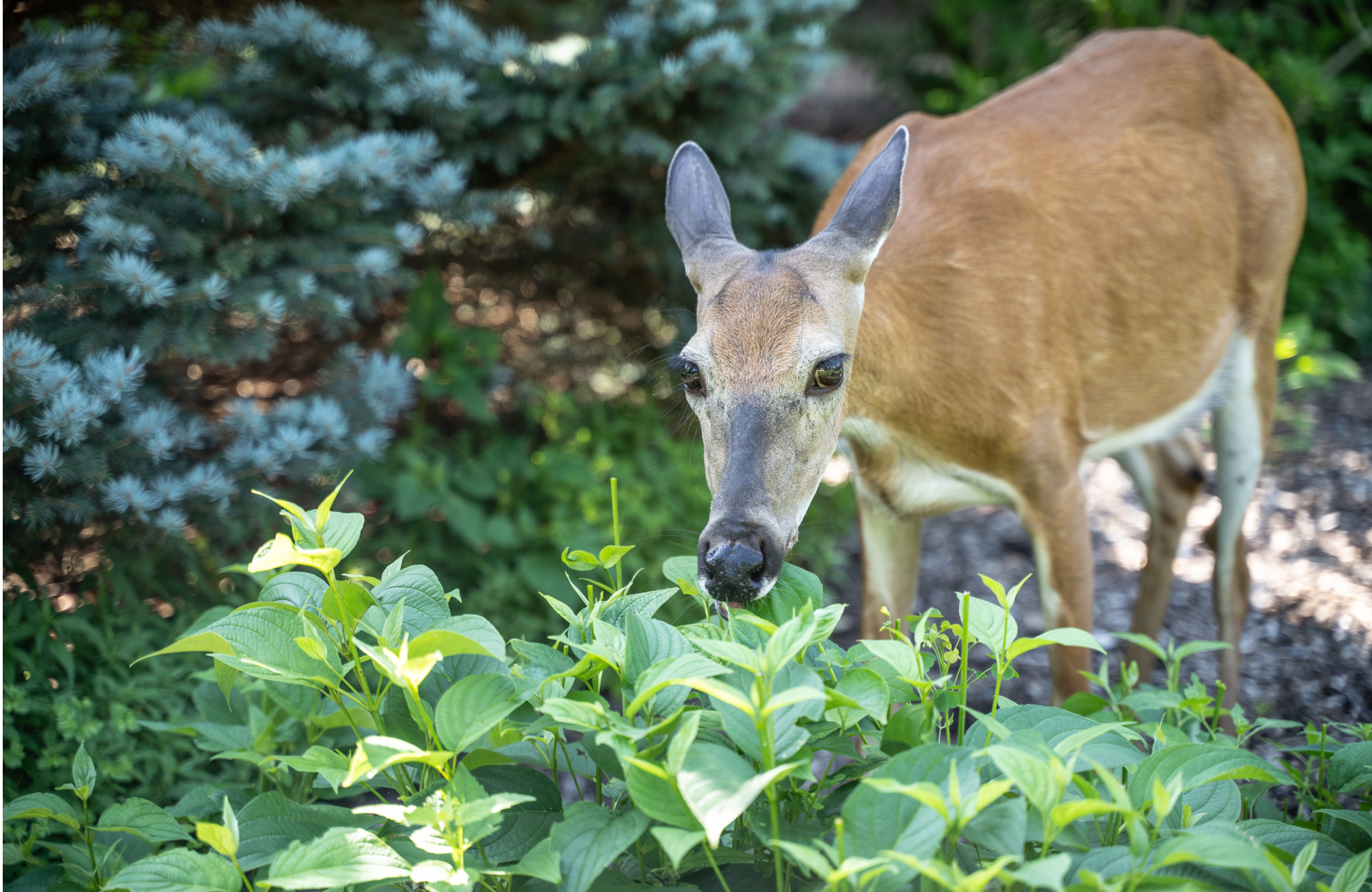
Forbs
- Asters
- Chickweed
- Fleabane
- Goldenrod
- Pokeweed
- Ragweed
- Sunflowers
- Verbena
- Violets
- Wild lettuce
Grasses
Grasses, on the other hand, aren’t as big of a staple in most natural deer forage. Neither are fungi. Combined, both comprise roughly five to 15 percent of a deer’s diet, depending on the time of the year. Deer eat the most grass in the spring when green-up is flourishing and mast isn’t as readily available. This is also when deer are most desperate for nutrition and calories after eating lots of woody browse throughout the winter. Since grasses are some of the first greenery deer see, they become a crucial, albeit temporary, food source.
- Bluegrass
- Bromes
- Oats
- Panic grass
- Wheat
Yards and Gardens
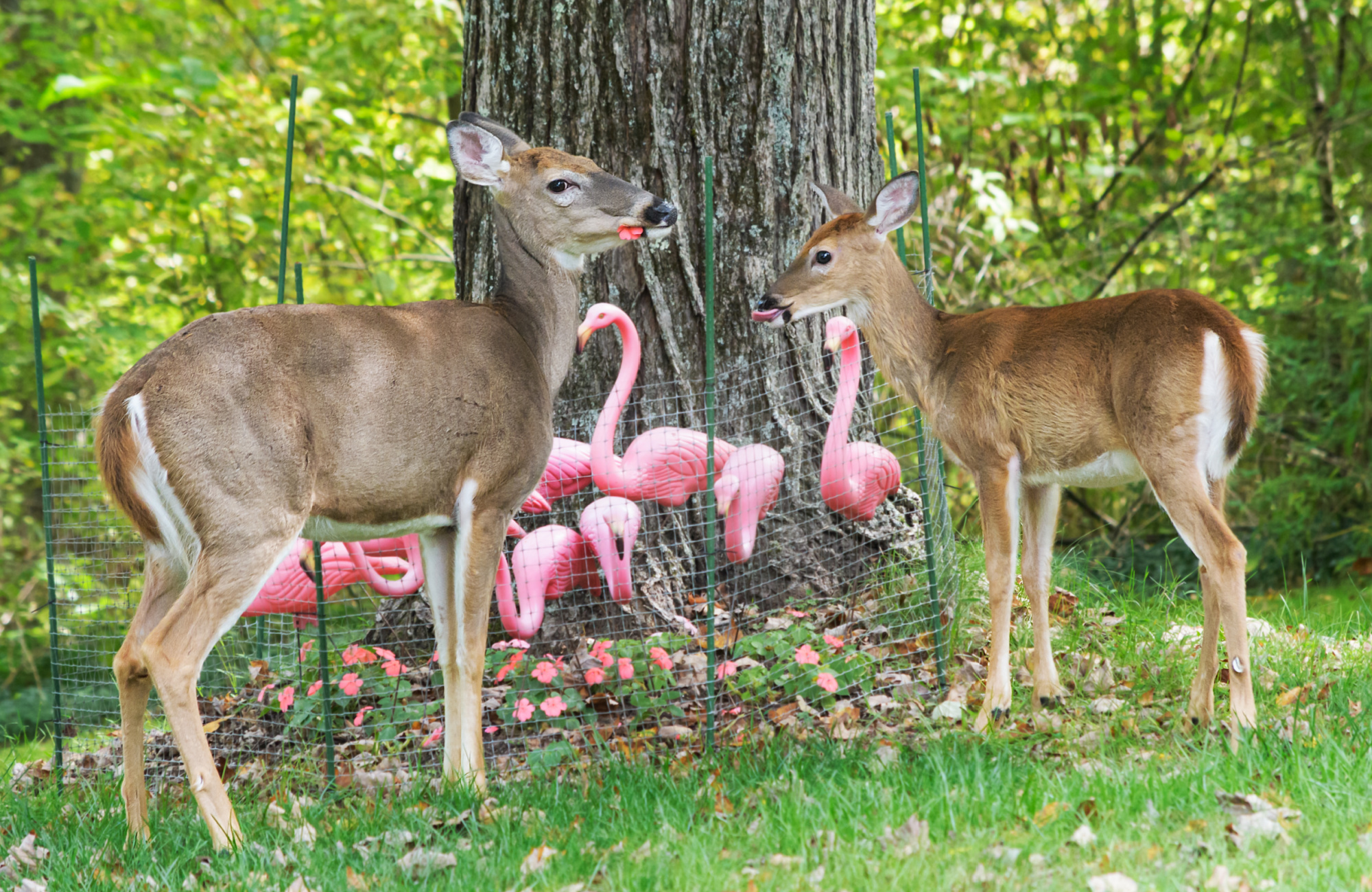
Homeowners and gardeners probably wish deer only ate wild foods. But unfortunately for their flower beds and vegetable patches, that is not the case. Deer will eat both decorative flowers and produce if they have access to it—especially if wild food sources are scarce or if suburban development has replaced natural habitat.
Flowers and Ornamentals
- Arborvitae
- Azaleas
- Crocuses
- Daylilies
- English ivy
- Geraniums
- Hollyhocks
- Hostas
- Impatiens
- Rhododendrons
- Roses
- Tulips
- Yew trees
Vegetables and Fruits
- Beans
- Beets
- Berries and cherries
- Brassicas like broccoli and cauliflower
- Cabbage
- Kohlrabi
- Leafy greens
- Melons and cantaloupe
- Pears
- Peas
- Stone fruit
- Strawberries
- Sweet Potatoes
- Tomatoes
- Turnip
- Pumpkins
Read Next: Best Deer Decoys
Agriculture

In farm country, a whitetail deer’s diet largely revolves around crops. They target most cereal grains and other common monocultures, as well. Much like how the seasonality of different wild forages impacts what deer eat when, they also adapt their diet based on what crops are available.
Crops
- Alfalfa
- Corn
- Clover
- Peanuts
- Rye
- Sorghum
- Soybeans
- Sunflowers
- Triticale
- Wheat
Throughout much of the Midwest and South, corn and soybeans dominate deer hunters’ attention. Deer eat corn ears as soon as they’re filled out (in the summer) and will continue to eat corn even after a field is harvested—they pick through the waste grain that’s left in the field by a combine or chopper.
Soybeans are another prime food source and contain upwards of 30 percent crude protein in fields with good soil fertility, which is well above what deer need for optimal body and antler development, according to the NDA. Deer will hit bean fields hard in the summer, targeting the fresh green leaves at the top of the plant. When the plants turn yellow, deer typically move on to other food sources. Then later in the fall when the beans are brown and dried, deer will come back to eat the pods. Just like with cornfields, deer will feed in a beanfield well after harvesting, gobbling up any waste grain.
Food Plots: Agriculture for Deer
If you own or lease land and have some say in what goes in the ground, food plots are a great option for attracting and holding deer. Supplemental nutrition can go a long way in helping the deer in your area grow, reproduce, and pack on the pounds for a long winter. The best food plots also make for great stand locations.
However, food plots can be expensive and complicated to grow. You’ll need to do plenty of research before getting started. It’s important to know that there’s not one silver-bullet crop for food plots. The best choice depends on your region, budget, soil, and available equipment.
Food Plot Crops
- Alfalfa
- Brassicas, like turnips
- Buckwheat
- Cereal grains
- Chicory
- Clover
- Corn
- Soybeans
Read Next: Best Backpack Sprayers
What Do Mule Deer Eat?
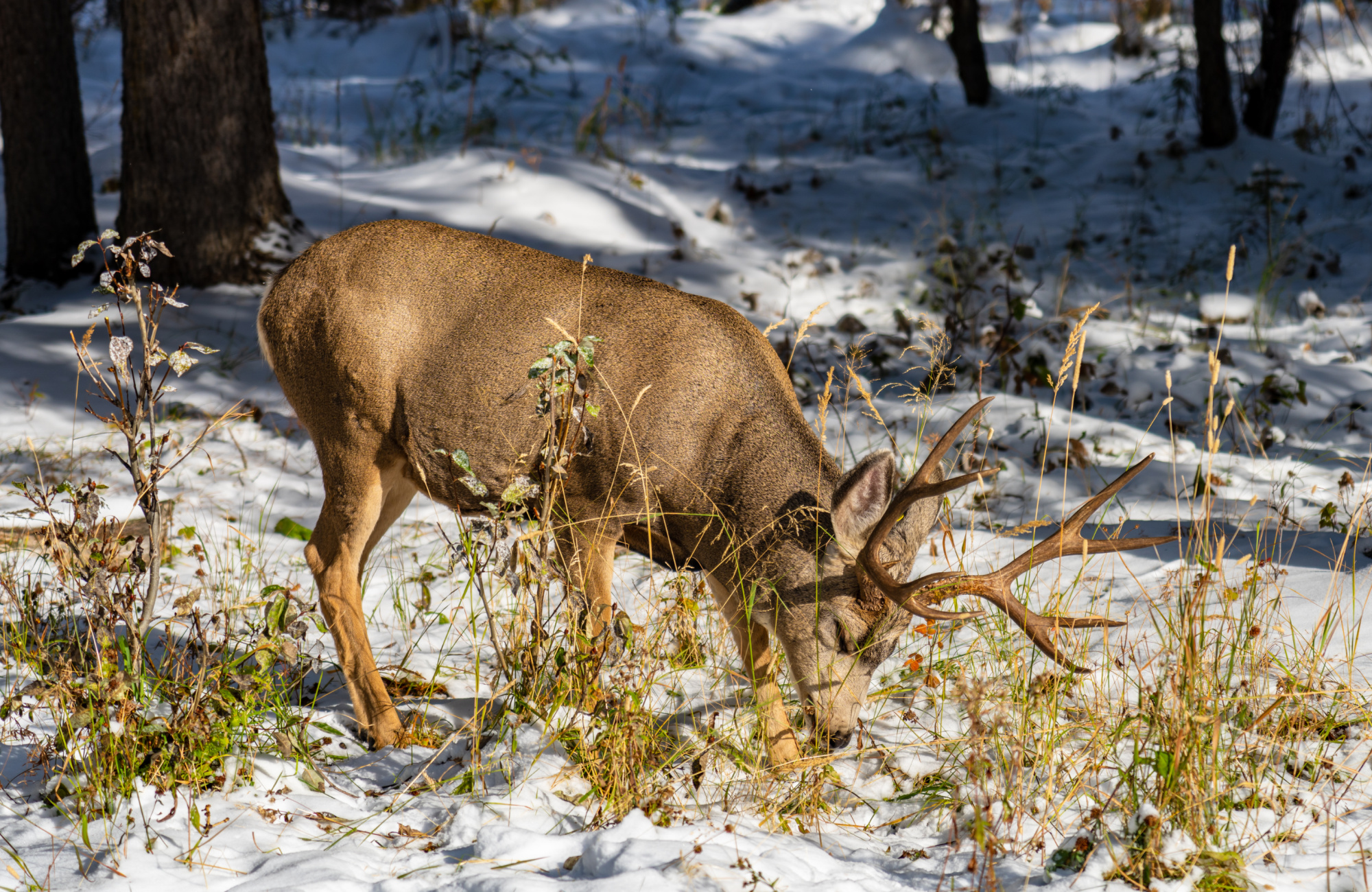
When it comes to mule deer vs whitetail deer, everything you need to know about how their diets differ is based on their home range. Mule deer range covers from the deserts of Arizona and New Mexico to the timber stands of Alberta, and from the Great Plains to the Pacific Coast.
All deer that live in the West have to navigate drought, extreme weather, and wildfire impacts. The flexibility of their diets reflect these challenges. Mule deer also eat mostly woody browse and forbs throughout the spring and early summer. When cold weather hits, they rely on a lot of very cold-hardy shrubs to get them through until green-up. And just like whitetails, mule deer will devour agricultural crops when they have the opportunity.
Mule Deer Food Sources
- Bitterbrush
- Buck brush
- Cliffrose
- Fairy duster
- Jojoba
- Mesquite
- Mountain mahogany
- Prickly pear cactus
- Rocky Mountain juniper
- Sagebrush
- Skunkbush sumac
What Do Deer Eat FAQ
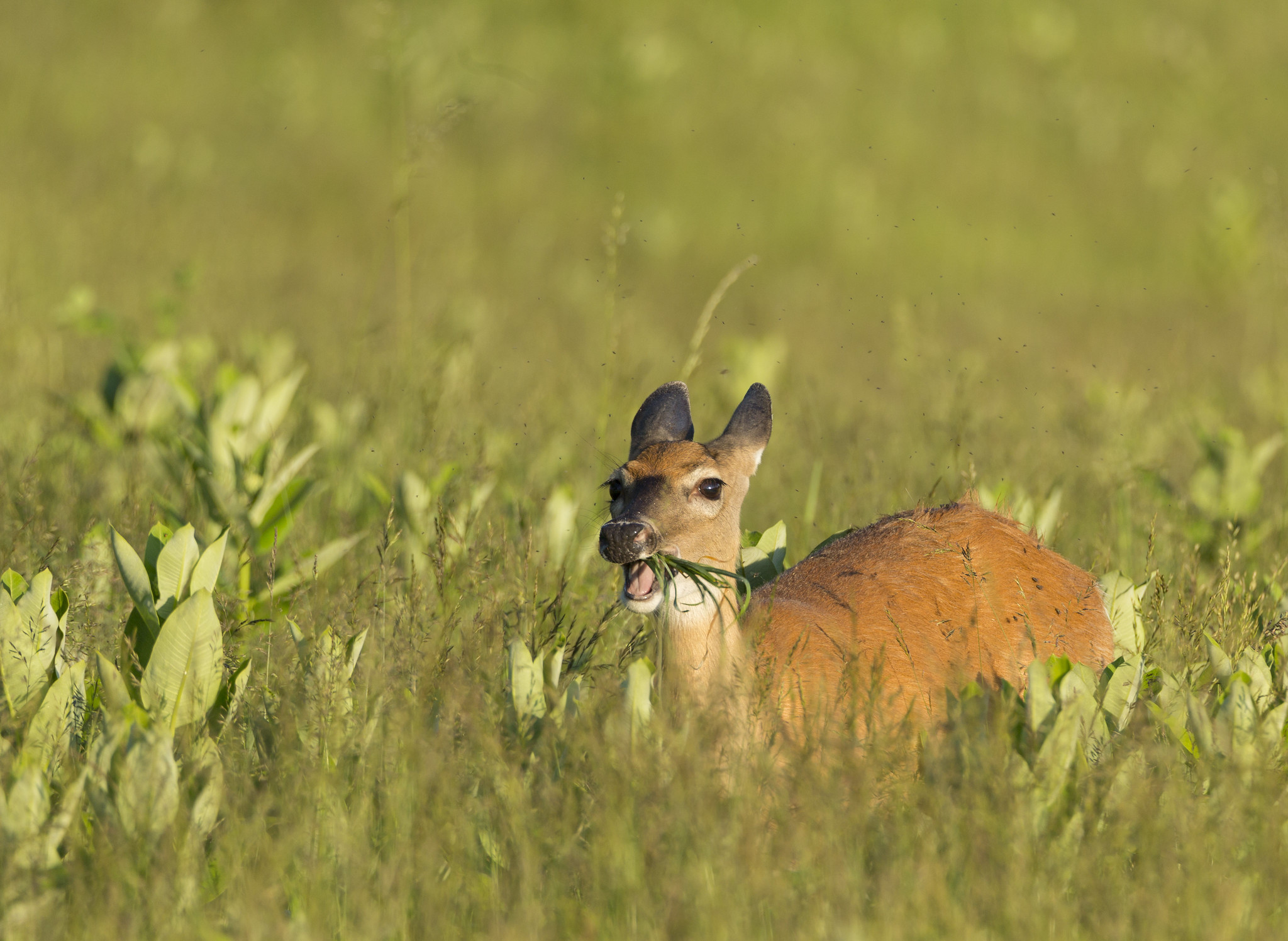
What is the best thing to attract deer?
The best thing to attract deer is a variety of food sources including mast, forbs, shrubs, trees, and crops. The more diverse food options you have, the more deer you’ll attract throughout the year. There is no one single food source that attracts deer above all others, all year long.
What nut trees do deer like best?
Deer love acorns from white oaks perhaps more than any other hard mast. Deer also love hickory nuts, chestnuts, and beechnuts, and they’ll of course eat acorns from red oaks, too.
Do deer eat tomato plants?
Unfortunately, yes. Deer will eat tomato plants and tomatoes themselves. The best thing for gardeners to do is to fence off their plants so deer can’t reach them.
Read Next: What Colors Can Deer See?
Final Thoughts on What Deer Eat
Whether you’re trying to plant a food plot to hunt over in the fall or you want to avoid having deer ransack your flowerbeds, it’s important to know what deer eat and what they don’t eat. Deer live in almost every corner of the country, which means they cover a diverse set of habitats, and climates, which impact the food sources available to them. Those sources range from the wildest native forbs and untouched woody browse to yew trees maintained by hired landscapers in a subdivision. So when you ask “what do deer eat?” the best answer is: a little bit of everything.
